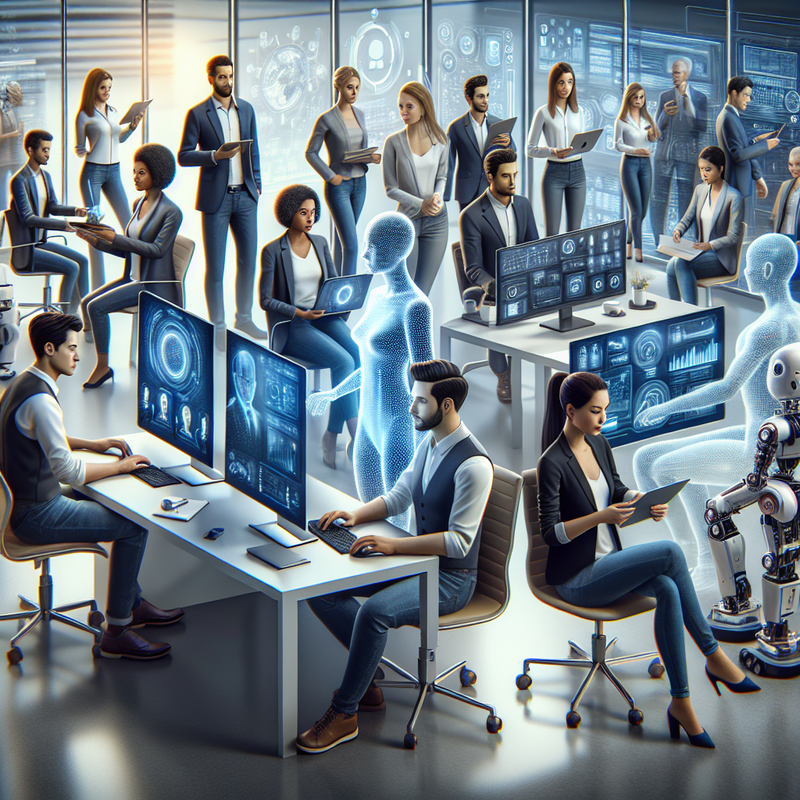In a landmark collaboration, Microsoft and LinkedIn have jointly released the findings of the Work Trend Index for the year 2024, offering fresh perspectives on artificial intelligence’s role in the workplace.
The report draws attention to the transformative effects of AI on work dynamics and the wider employment ecosystem, shedding light on both the positives and the obstacles encountered by organizations and their staff.
The integration of generative AI into the professional arena has notably shifted the dynamics between workers and technology. Findings from the Work Trend Index suggest employees are widely adopting AI, leveraging it to navigate the waters of high-pressure work environments and to enhance the execution of their core responsibilities.
Challenges in AI Implementation
Despite the growing momentum behind AI integration, businesses encounter real challenges. Ryan Roslansky, the CEO of LinkedIn, brought attention to the necessity of flexibility and fostering in-house expertise to thrive in this new AI-imbued landscape. Businesses often find themselves grappling with demonstrating AI’s financial benefits, even though its strategic value is clear.
The conclusions presented in the Work Trend Index are grounded in data collected from a global survey of 31,000 individuals spanning 31 countries, insights from LinkedIn’s own employment data, analysis of Microsoft 365 productivity metrics, and conversations with executive leaders from Fortune 500 enterprises. This collaboration between Microsoft and LinkedIn delivers a comprehensive analysis of how AI technologies are influencing workplace practices.
Satya Nadella, the Chairman and CEO of Microsoft, articulated the prospects AI presents, saying, “Our latest findings underscore the chance every business has to harness this technology to bolster decision-making, collaboration, and ultimately, the bottom line.”
The Evolving Labor Market
Navigating further into AI implications, the Index uncovers the nuanced effects of AI on labor markets and job prospects. Although there’s worry surrounding job displacements, the reality is intricate, showing signs of skills shortages and a notable upshift in professionals contemplating career alterations. LinkedIn has witnessed growth in members listing AI competencies on their profiles, indicative of proactive skill acquisition among those outside the tech sector.
With a spotlight on talent scarcity in areas like cybersecurity, software engineering, and design, organizational leaders are adapting to this new terrain. Another striking realization from LinkedIn’s separate survey is that close to half of workers globally, and an astounding 85% in America, are considering leaving their roles, potentially leading to major shifts in the employment market.
Employee AI Engagement and the AI Power User
A significant outcome of the Index is the discovery that an overwhelming majority of workers now employ AI tools in their day-to-day tasks, with many introducing their own AI solutions to boost efficiency. However, corporate strategies have not kept pace with this grassroots innovation, as executives voice uncertainties about establishing robust AI roadmaps.
The investigation has categorized AI users into four distinct profiles, from the hesitant to the highly adept. Remarkably, those fully utilizing AI report saving upwards of 30 minutes daily by integrating AI into their workflows and often find themselves in organizations that actively endorse AI use and provide specialized AI training.
The report underscores the necessity for companies to align with their employees’ growing utilization of AI, optimizing its benefits for company-wide progress.
Conclusion
As the proliferation of AI redefines the contours of the modern workplace, the insights from the 2024 Work Trend Index provide pivotal guidelines for both executives and workers to adapt in this evolving environment. For an in-depth exploration and additional resources, the complete report is accessible on WorkLab, while valuable intel on AI’s repercussions on employment can be found on LinkedIn’s platform.
























